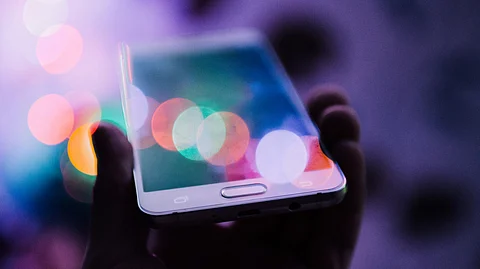

It’s not the New Year, but it doesn’t have to be to need or want a clean slate. When it comes to hoarding, that’s not always easily done. The mental condition makes it difficult to part with your possessions—clothes, papers, forks, and even animals. Digital files are also on that long list.
Picture this — thousands of screenshots, unopened texts and emails, and a looming notification that your phone’s storage is almost full. For many, such is the new reality in the digital age.
But if your device is filled with too much digital clutter, it could be affecting your mental health and productivity, experts say.
Everyone with a digital device will likely face such clutter at some point. But sometimes, the common behavior can tip over into a disorder that more researchers are trying to understand: digital hoarding.
Worried you might have saved too much on your devices? Here’s how to ease up on digital clutter and know when you might be displaying signs of a disorder, according to experts.
If you find yourself having to wade through thousands of photos or files to find what you need or are experiencing less concentration and mental energy than usual, it may be a sign that you have too much digital clutter.
Digital clutter can also be seen as a constant stream of notifications, which can take away your focus and slow down your concentration, she added.
Maybe you want to hold on to memories through pictures or hang on to unneeded documents and files from college courses or old jobs just in case. But sometimes, when the behavior turns into large amounts of information being stored, it can be considered hoarding.
A digital hoarding disorder will be fueled by a persistent urge to save digital information, rather than a “preference” to store that is more flexible,
It is estimated that about 3% to 5% of the global population — about 8 million to 12 million people in the United States — suffer from hoarding disorder,
Hoarding is considered to be related to obsessive-compulsive disorder, and a 2019 studyt hat surveyed hundreds of adults in the UK found the behavior to be common in the workplace. A 2020 follow-up study found four distinct types of digital hoarding: those who are organized, those who are disorganized, those who keep the digital information on behalf of their companies, and those who keep it out of strong emotional ties and often worry about losing it.
Storing digital clutter that crosses over into a disorder depends on the individual, but a key factor is when it causes significant distress or impairment in everyday functioning,
How can you tell if you may be experiencing digital hoarding? If the clutter is taking up so much space on your devices so you can’t store other stuff that you need, or if wading through the clutter is “taking away time from other necessary activities or social activities, or interfering with (your) life in any other way,” it may be a sign of excess acquisition of digital material, Saxena said.
Decluttering is like a magic wand to your mental health. For those who struggle with decluttering, she recommends dedicating a few minutes each morning to do a digital audit, deleting emails and other notifications that aren’t needed. If you spend a couple of minutes decluttering before you start working, it’s going to pave the way for the rest of your day to be much more productive.
Here are some other tips for decreasing digital clutter and how it affects your day, according to experts:
1. Turn off nonessential notifications and unsubscribe from any advertisements clogging up your emails. It’s almost like mental mosquitoes. They’re always buzzing. By limiting the number of notifications, you limit their ability to take away your focus at times when you need it.
2. Set boundaries: Minimize the amount of time you spend checking your emails and social media notifications and use your device’s silencing and do not disturb features for other times. Also, limiting the number of accounts you follow on social media can decrease the clutter on your feed and the amount of time spent mindlessly scrolling.
3. Take a digital detox day, or at least some time out of the day in which you’re not tuned in to your digital world, which can help you feel less overwhelmed by the clutter and constant notifications. Having a plan for how to tackle digital clutter and making a commitment to declutter a little each day, or not store more than what is needed, can help those who may be suffering from digital hoarding.
If you find yourself being affected in school or at work — such as turning in assignments late — having trouble sleeping at night due to being overwhelmed or feeling disconnected from relationships, these can be signs of significant distress, and it may be time to see a mental health professional.
We all deal with digital clutter more than we think that we do and decluttering is one simple way, if we put a little bit of time into it, that has great payoffs in terms of our productivity and just overall happiness.
Reference :
FOX10 News. "Are You a Digital Hoarder?" FOX10 News, November 21, 2024. Accessed November 23, 2024. https://www.fox10tv.com/2024/11/21/are-you-digital-hoarder/.
LaMotte, Sandee. "Digital Hoarding and Clutter: Why It Can Be Bad for Your Wellness." CNN Health, November 15, 2024. Accessed November 23, 2024. https://edition.cnn.com/2024/11/15/health/digital-hoarding-clutter-wellness/index.html.
BuildFire. "App Download and Usage Statistics (2024)." BuildFire. Accessed November 23, 2024. https://buildfire.com/app-statistics/.
(Input from various sources)
(Rehash/Yash Kamble/MSM)
